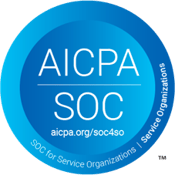As winter settles in across Canada, workplaces face unique challenges. Snow, ice, and freezing temperatures create conditions where slips, trips, falls, and musculoskeletal strains become more likely.
For employers and employees alike, understanding how to prevent, assess, and manage winter-related injuries is essential for workplace safety and employee well-being.
Seasonal Hazards in the Workplace
Winter introduces a range of hazards that can increase the risk of injury:
- Slips and Falls: Icy sidewalks, wet floors from tracked-in snow, and poor lighting can lead to falls, which are among the most common winter workplace injuries.
- Muscle Strains and Sprains: Shoveling snow, lifting heavy objects, or performing repetitive tasks in cold conditions can place extra stress on muscles and joints.
- Cold-Related Conditions: Frostbite and hypothermia, though less common in indoor environments, remain risks for workers exposed to outdoor elements.
Proactive prevention is key. Employers can reduce risks by implementing proper snow and ice management, providing slip-resistant footwear, and promoting safe lifting techniques. Employee awareness and training also play a crucial role in mitigating injury risks during the winter months.
The Importance of Early Assessment
Prompt assessment after an injury is critical to ensure optimal recovery and minimize long-term complications. Early medical evaluation helps:
- Identify the full extent of the injury.
- Determine whether the worker can safely return to work with accommodations.
- Prevent minor injuries from developing into chronic issues.
Waiting too long to assess a winter injury can prolong recovery, increase costs for both employees and employers, and potentially compromise workplace safety.
IMEs and FCEs: Guiding Safe Return-to-Work
Independent Medical Examinations (IMEs) and Functional Capacity Evaluations (FCEs) play a vital role in winter workplace injury management:
- IMEs: Provide objective, evidence-based medical opinions to guide treatment and inform employers, insurers, and legal stakeholders. An IME ensures that decisions about return-to-work or accommodations are unbiased and medically sound.
- FCEs: Assess a worker’s physical abilities and limitations following an injury. FCEs help employers design safe return-to-work plans tailored to the employee’s capabilities, reducing the risk of re-injury.
At NYRC, our experienced assessors provide comprehensive assessments, combining IMEs and FCEs to support employees in returning safely and confidently.
Building a Safer Winter Workplace
Winter doesn’t have to mean higher injury rates. By prioritizing prevention, promoting early assessment, and leveraging IMEs and FCEs, organizations can safeguard employees and maintain productivity even during the coldest months.
Key Takeaways:
- Winter hazards like ice, snow, and cold stress increase the risk of workplace injuries.
- Early assessment is crucial to prevent complications and support recovery.
- IMEs and FCEs provide objective insights that guide safe return-to-work decisions.
Preparedness, awareness, and structured evaluation can make all the difference in navigating winter workplace injuries effectively.



